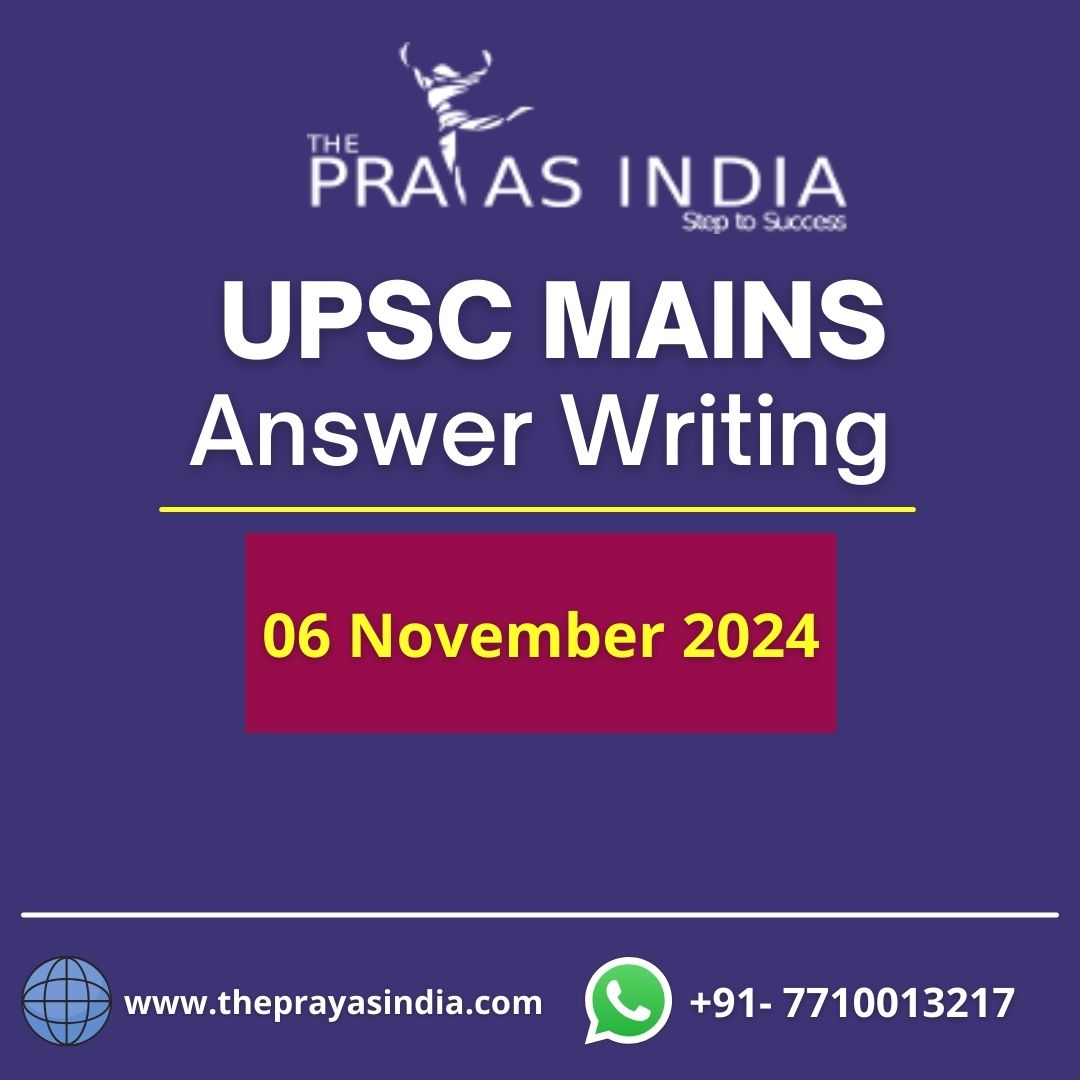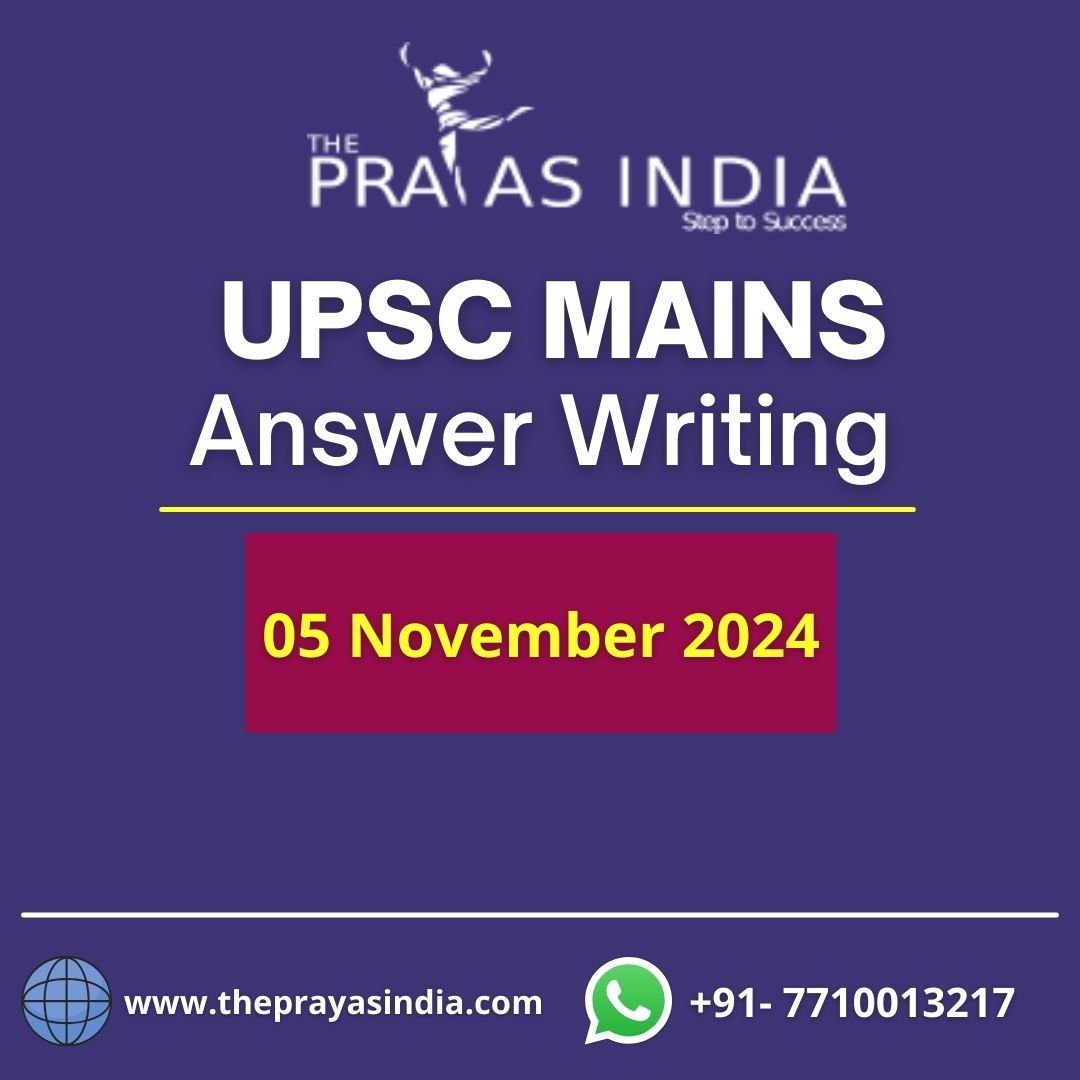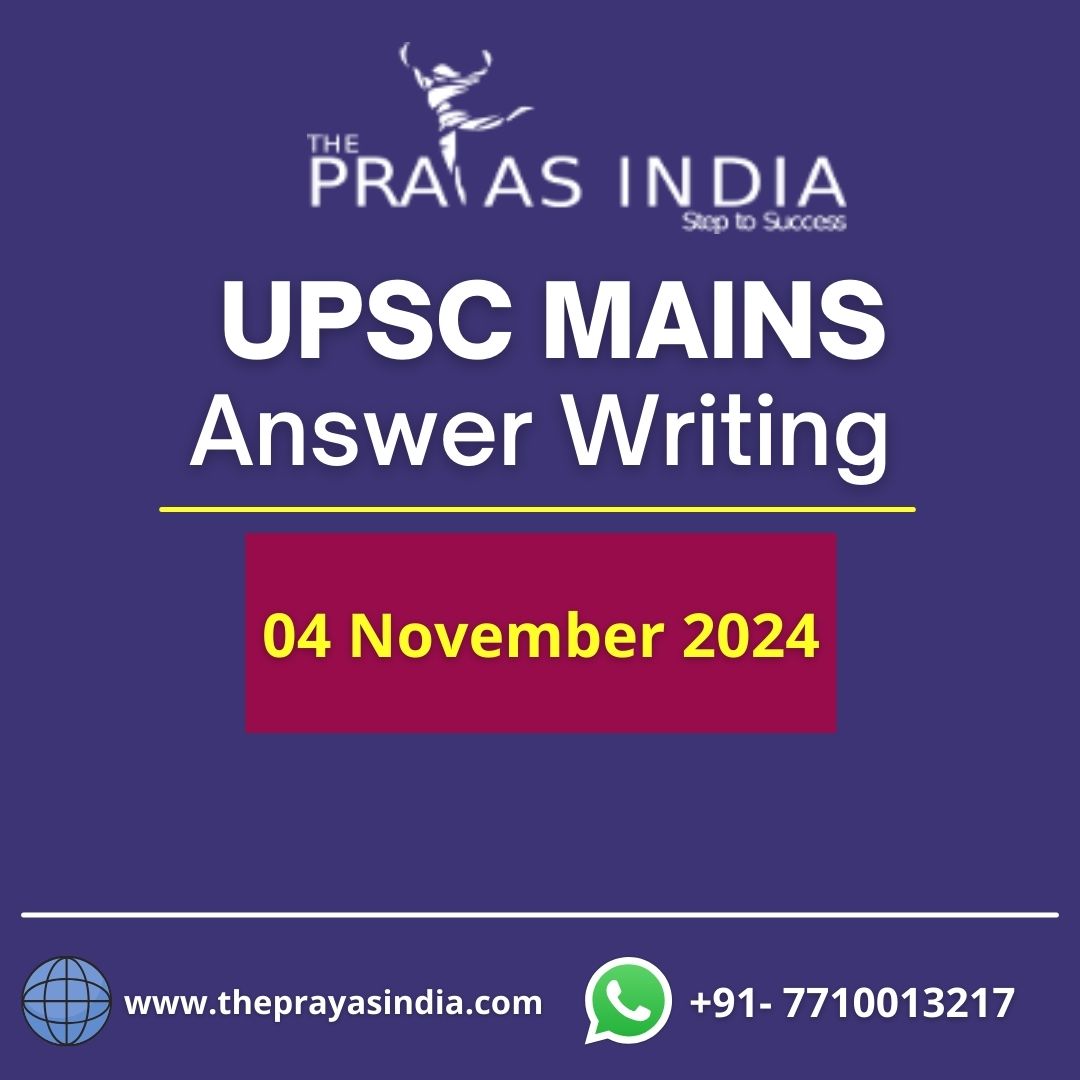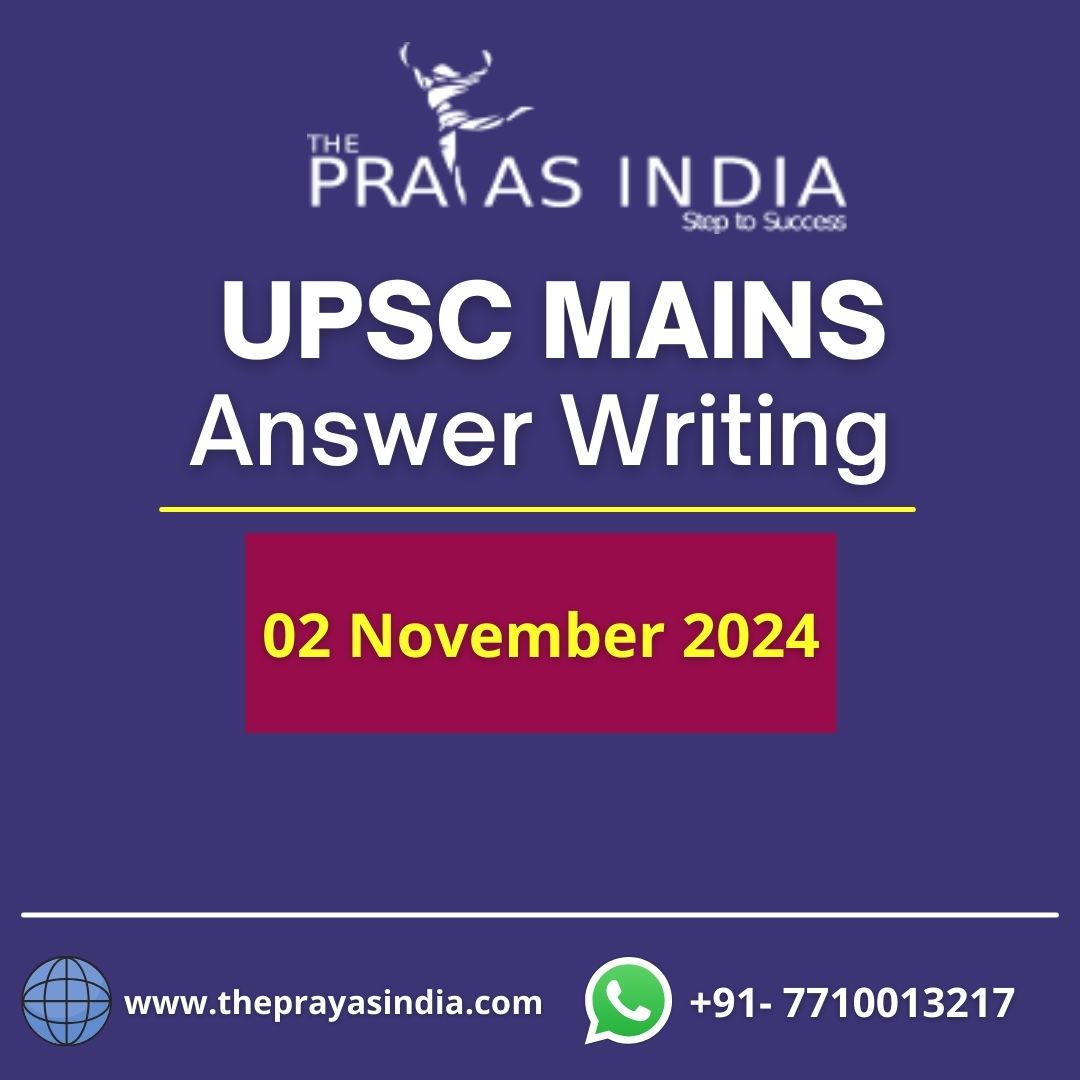DAILY QUESTIONS & MODEL ANSWERS
Q1. A significant source of worry is the number of court cases that are still ongoing, which not only slows down the administration of justice but also has financial ramifications. Examine the causes of the backlog of cases and suggest remedies to reduce it. (250 words)
Paper & Topic: GS II – Judiciary related issues
Model Answer:
Introduction:
- Any democracy’s constitution compels judges to serve the people “without fear or favour, affection or ill-will,” according to this requirement. India’s court is playing an ever-increasing role in the country’s governance and ability to function. A measure of the justice delivery system is the number of cases that are still pending in courts across the country. This element’s condition has drastically deteriorated.
Body:
Causes of the enormous case backlog:
- The Supreme Court’s decision to stop hearing cases with constitutional significance and instead function as an ordinary court of appeals is the main reason for the increase in the number of cases currently pending.
- Legal analysts assert that either appeals from other high courts or cases involving egregious abuses of a person’s fundamental rights make up the majority of the cases the Supreme Court hears on a daily basis. The supreme court, however, was never meant to fulfil this function.
- not enough judges
- In comparison to 1950, there were almost four times as many Supreme Court justices in 1921. Since then, the number of cases pending has been steadily rising.
- With 5,580 unfilled jobs in subordinate courts, or 25% of all seats, India has a poor judge-to-population ratio of 20 judges per million inhabitants. The Law Commission had previously recommended a ratio of 50 judges per million.
- Frequently taking breaks: The majority of cases handled by courts do not adhere to the established procedure, which allows for a maximum of three adjournments per case. As a result, there are more cases outstanding.
- Low budgetary allocation resulting in inadequate infrastructure: Just about 9% of India’s GDP is used to maintain its judicial system.
- Because of its terrible infrastructure, the nation’s inferior courts are unable to make reliable judgements.
- Only 15,540 of the 20,558 judicial officials authorised for all of India, according to a Supreme Court report from 2016, could be supported by the extant infrastructure.
- governmental cases The Center and the States were in charge of more than 46% of the cases that were still pending in Indian courts, according to LIMBS statistics.
- Currently, up to 40% of the Supreme Court’s outstanding proceedings are special leave petition petitions.
- The majority of the judiciary’s time is taken up by pointless PILs and other publically unpopular government actions.
- Judges’ Holiday: Judges work an average of 188 days year, despite Supreme Court guidelines requiring a minimum of 225 days of duty.
- Court management systems are not present: Courts have developed separate jobs for court managers in order to improve court administration, speed case movement, and maximise judicial time.
- However, these roles haven’t been filled in many courts yet.
- Ineffective investigation: Police usually are unable to conduct a successful investigation due to a lack of current, scientific methods to obtain evidence.
What must be done:
- The following suggestions were offered by the Parliamentary Standing Committee in its report on improving infrastructure and supporting inferior courts: States should provide enough land, among other things, for the building of judicial facilities. Because there isn’t much land available, vertical construction should be done.
- The creation of electronic courts is contingent upon the completion of a timeframe for computerising all courts.
- For the first time, a judge strength fixation formula was developed in the report of India’s 120th Law Commission.
- The Supreme Court and High Courts must appoint qualified and experienced judges to act as Ad-hoc judges in conformity with the Constitution.
- The All India Judicial Service would strengthen the lower judiciary by elevating judge quality and reducing the backlog of cases.
- Setting yearly objectives and action plans for the High Courts and lower courts will aid in speeding up case resolution. A strict code of conduct may be given to the judicial officers to ensure that the authorities are carrying out their duties effectively.
- Adjournments are strictly regulated, exceptional costs are enforced for those who request them on flimsy grounds, especially during the trial stage, and it is forbidden to extend the deadlines set forth in the Civil Procedure Code.
- To achieve this, it is required to classify and arrange instances based on their urgency and priority.
- By tracking, observing, and providing relevant information, IT (information technology) solutions are used to apply technology to make justice more user-friendly for litigants.
- All of the country’s courts must switch over right away to a hybrid virtual format and start hearing cases.
- Process redesigning incorporates technology into judicial procedures in order to radically improve efficiency and quality by redesigning core business procedures. It will include: case filing electronically Through e-Courts, which offer case status and case history for all pending cases in High courts and Subordinate courts, information is made simple to access.
- elastic search, a new kind of search that is more akin to artificial intelligence, is being used to modernise the National Judicial Data Grid.
- As stated in the Conference on National Initiative to Reduce Pendency and Delay in Judicial System-Legal Services, authorities should use pre-litigation mediation to manage the flow of cases entering courts.
- It is important to hold regular Lok Adalat meetings to settle civil and domestic conflicts.
- By successfully resolving small claim disputes from rural areas, Gram Nyayalayas will help lighten the pressure on the legal system.
- A Village Legal Care & Support Center may also be established by the High Courts to encourage state litigation at the local level.
Conclusion:
- A successful court system must be easily accessible, reasonably priced, and provide swift justice. These demands cannot be fulfilled unless and until everyone has timely access to the justice delivery system at a reasonable cost. The delivery of justice in India must therefore be improved and strengthened by constant formative examination.
Q2. The Earth-based geopolitical conflict is spreading into space. Interventions spearheaded by the United Nations Committee on the Peaceful Uses of Outer Space are urgently required to guarantee that space is only utilised for peaceful reasons. Examine (250 words) (250 words)
Paper & Topic: GS III – Science and Technology
Model Answer:
Introduction:
- India and the USA have agreed to work together in space. Delhi has recently grown more interested in space from a strategic standpoint as a result of its understanding of two major issues. One is the significance of emerging technologies in shaping the global structure of the twenty-first century. The focus of the other is the significance of developing new laws to ensure peace and stability in space.
- It is a tragedy of the commons that the growing number of space exploration missions today raises questions about space waste, weaponization, and space dominance.
Body:
The expansion of the geopolitical conflict into space:
- Astropolitics: Commercial space exploration has traditionally been dominated by the US. Its military confrontation with Russia helped to set security standards.
- China’s emergence as a serious space power, both militarily and economically, is transforming astropolitics.
- China as a factor In order to safeguard their national interests and advance long-term stability in the skies above, democratic nations are under more pressure to work together due to China’s exceptional development of its space capabilities and Beijing’s aim to govern the universe.
- No universal laws exist. Space is a commons, hence any nation’s decision to test an anti-satellite weapon and generate tonnes of garbage in the process is unpunishable.
- a great deal of debris: Governmental and private satellite owners have an incentive to protect their equipment while it is in operation, but not afterward.
- Space debris is pollution, as we have learnt on Earth, and without a defined division of duties for pollution, public spaces would be completely destroyed.
- National and commercial interests are becoming more intertwined with space in the political, economic, and military domains.
- Space is also strongly tied to contemporary political issues including nuclear non-proliferation, economic development, cybersecurity, and human rights, in addition to the fantastical concepts like solar energy satellites, fusion energy, and hotels in orbit.
Space administration and international law:
- Resolution 1472 of the UN General Assembly established the Committee on the Peaceful Uses of Outer Space (COPUOS) in 1959. (XIV). This group found prospects for international collaboration in pacific space exploration.
- Outer Space Treaty of 1967 India is a party to the Outer Space Treaty.
- The agreement prevents countries from orbiting the globe with “any objects carrying nuclear weapons or any other forms of weapons of mass devastation.”
- The stationing of such weapons in space or on celestial planets like the moon is also prohibited.
- The moon and other celestial bodies may only be used for peaceful purposes, according to all treaty parties.
- Although these accords prohibit the use of such weapons in space, they do not prevent nations from using other types of weapons.
- Many governments argue that because of this, the current agreements are insufficient to safeguard space as “the common legacy of mankind.”
- The world community has discussed the necessity to introduce transparency and confidence-building measures in space activity (TCBMS).
- In this regard, the European Union has also developed a draught code of conduct (CoC).
- However, major powers have not yet reached consensus on the idea of establishing a CoC conduct.
- Another key proposal from Russia and China together is the Prevention of the Placement of Weapons in Outer Space (PPWT), which is rejected by the US and the EU.
Conclusion:
- As space becomes into a hub for lucrative trade as well as a theatre of international conflict in the years to come, the significance of space cooperation must increase. However, considering the scale of the possibilities and issues in space, more rapid and complete reform is required. That can only be enforced at the highest political level.
- Space must only be used for peaceful purposes, and any attempt to militarise it must be resisted in the interest of the greater welfare of humanity. The security and safety of space-based assets should be ensured through international cooperation.




